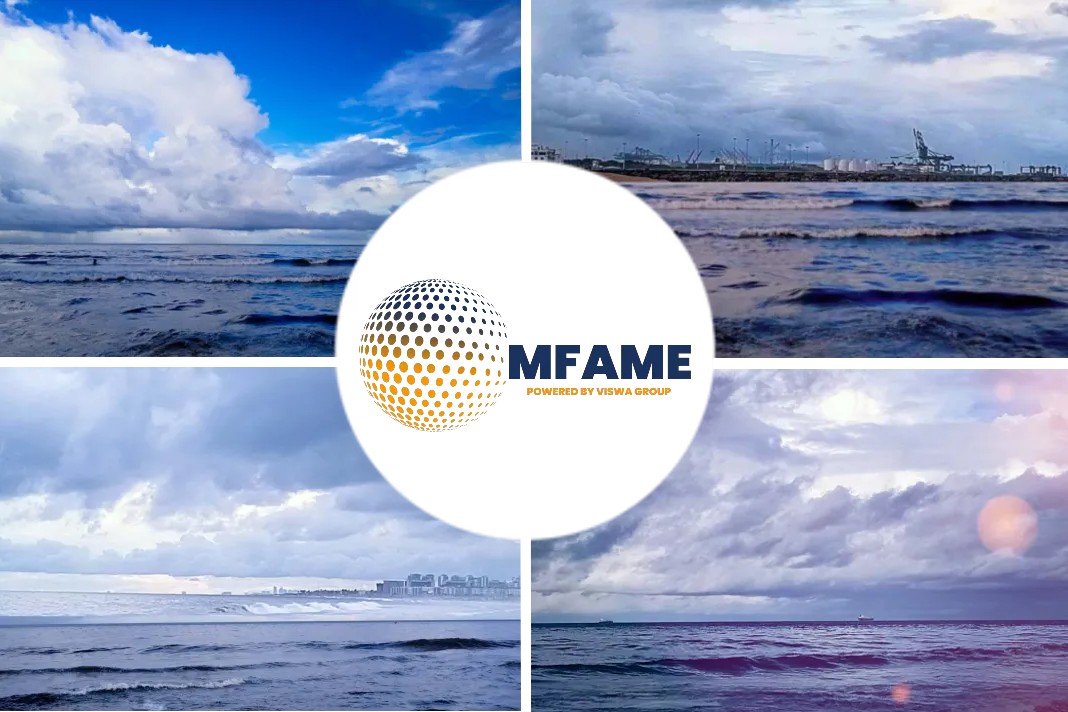- MAN Energy Solutions has announced that the first ME-GI engine featuring its newly-developed pump vaporiser unit (PVU) has successfully completed LNG gas trials in Korea.
- The engine is the first in a series of six neo-Panamax boxships – built by Hyundai Samho Heavy Industries (HSHI), and ordered by Eastern Pacific Shipping (EPS).
- MAN Energy Solutions reports that the engine is the largest and most powerful gas-engine with service experience from ME-GI operators recording a gas-availability rate of greater than 98%.
- The new engine features the PVU and a pilot booster injection valve (PBIV), in line with the company’s strategy to increasingly supply more-complete propulsion solutions.
The first ME-GI engine to feature MAN Energy Solutions’ newly-developed Pump Vaporizer Unit (PVU) has successfully completed LNG gas trials in South Korea, MAN ES has announced.
PVU8000 gas trials
The successful gas-trial marks the commercial debut of the PVU8000, the largest PVU ever produced by MAN ES and the largest available on the marine market.
The unit ensures the reliable flow of LNG through a compact design that – through individual control of the cryogenic pumps (cold-ends) – provides the redundancy required to ensure high reliability at all times.
- The Tenere was built at Hyundai Samho Heavy Industries (HSHI), while the engine for the neo-Panamax boxship was built under licence at HHI-EMD (Hyundai’s Engine Machinery Division).
- The 11-cylinder model of the G90ME-GI gas-injected design produces 68,640kW at its nominal maximum continuous rating.
Focus on propulsion solutions
Thomas S. Hansen, Head of Two-Stroke Promotion & Customer Support at MAN ES in Copenhagen told The Motorship that the range of new technical solutions underlined the company’s increasing focus on propulsion solutions.
“Alongside the engine, which is the largest and most powerful engine we have supplied, we have also supplied the LNG pump that supplies it,” Hansen said. It was a testament to the collaboration between the different parties in the project that the project had been delivered on schedule.
- The vessel is also the first to feature MAN ES’ new Pilot Booster Injection Valve (PBIV), which employs smaller or larger atomising holes, depending on fuel mode, to inject fuel into engines.
- The use of smaller holes in gas mode significantly reduces pilot-oil consumption, which MAN ES expects to reduce to 1.5%, approximately half of what was previously required.
While the ME-GI had excellent efficiency characteristics, the reliability record of MAN ES’s ME-GI engines was also “impeccable,” Hansen said. This was underscored by the service experience of ME-GI operators, who recorded a gas-availability rate of greater than 98%.
EPS CEO, Cyril Ducau, stated: “The successful gas and sea trials and the on-schedule delivery of CMA CGM Tenere make for an important MAN and EPS milestone. Three years ago, we committed to investing in alternative marine fuels, like LNG, to lead the industry towards decarbonisation and environmental preservation.”
He further added, “This commitment included selecting MAN’s high-pressure ME-GI engines, which are highly efficient and, importantly, reduce methane slippage to negligible levels. These vessels will be IMO 2030 compliant years ahead of schedule and will be the cleanest vessels of their category on-the-water today.”
Bjarne Foldager – Senior Vice President and Head of Two-Stroke Business at MAN ES – said: “I am delighted to receive the positive reports from these successful gas-trials where testing has proceeded smoothly according to the plan laid for the engine’s entry into service. I am also very encouraged by the reports of good cylinder conditions. The ME-GI engine is mature technology that has accumulated multiple references in multiple segments and is further improved by the introduction of the PVU.”
Successful FAT
HHI-EMD announced the completion of the shop test for the first of the six ME-GI engines at the end of January 2020. MAN ES reported at that time that the engine had successfully run at 100% load in gas mode during testing.
MAN ES also reported at that time that the engine – without any need for additional testing – had successfully passed its FAT (Factory Acceptance Test) and performed completely according to expectations, flawlessly handling load-changes and fuel change-overs while maintaining impeccable cylinder conditions.
Did you subscribe to our daily newsletter?
It’s Free! Click here to Subscribe!
Source: MAN ES

















